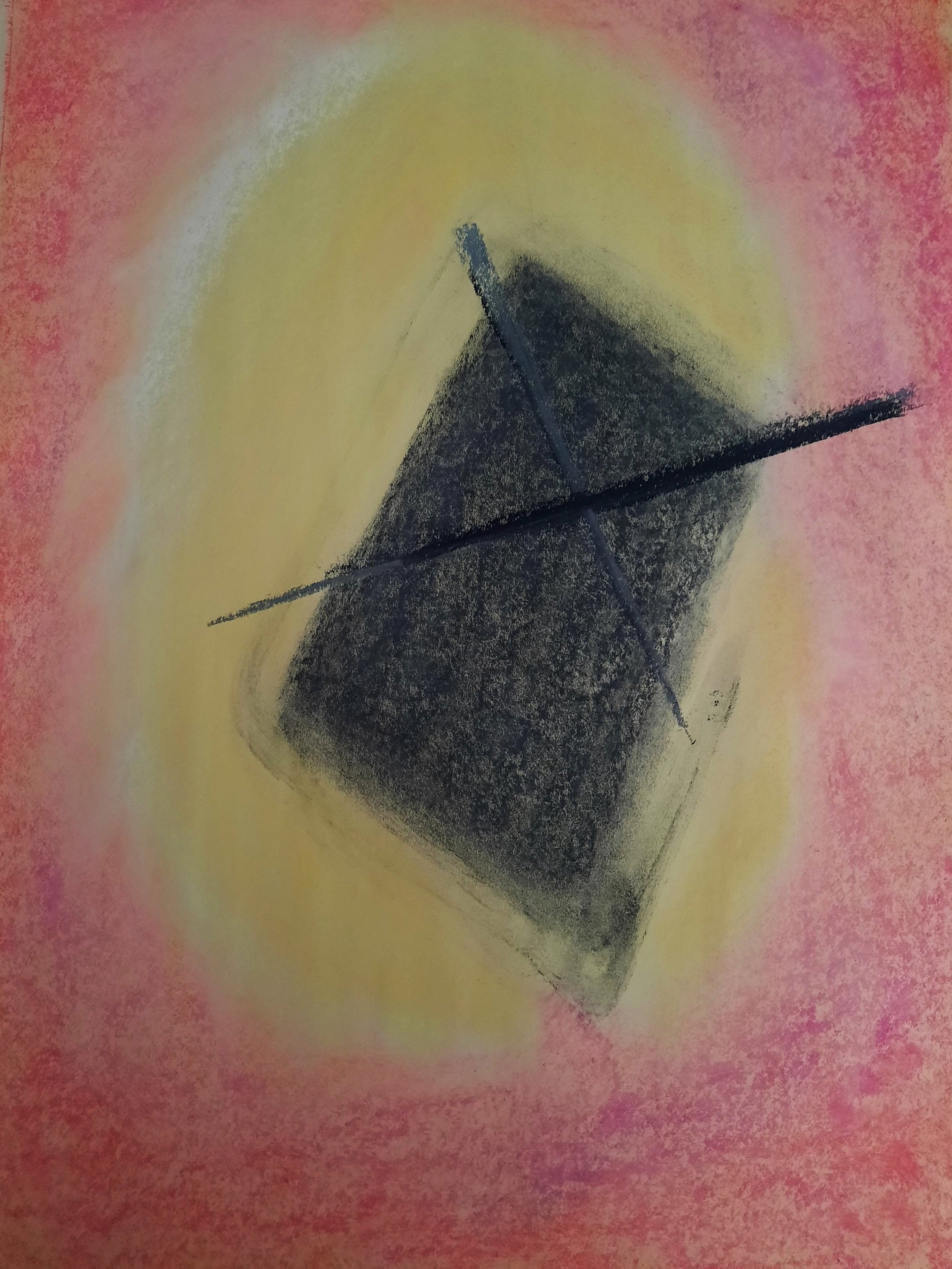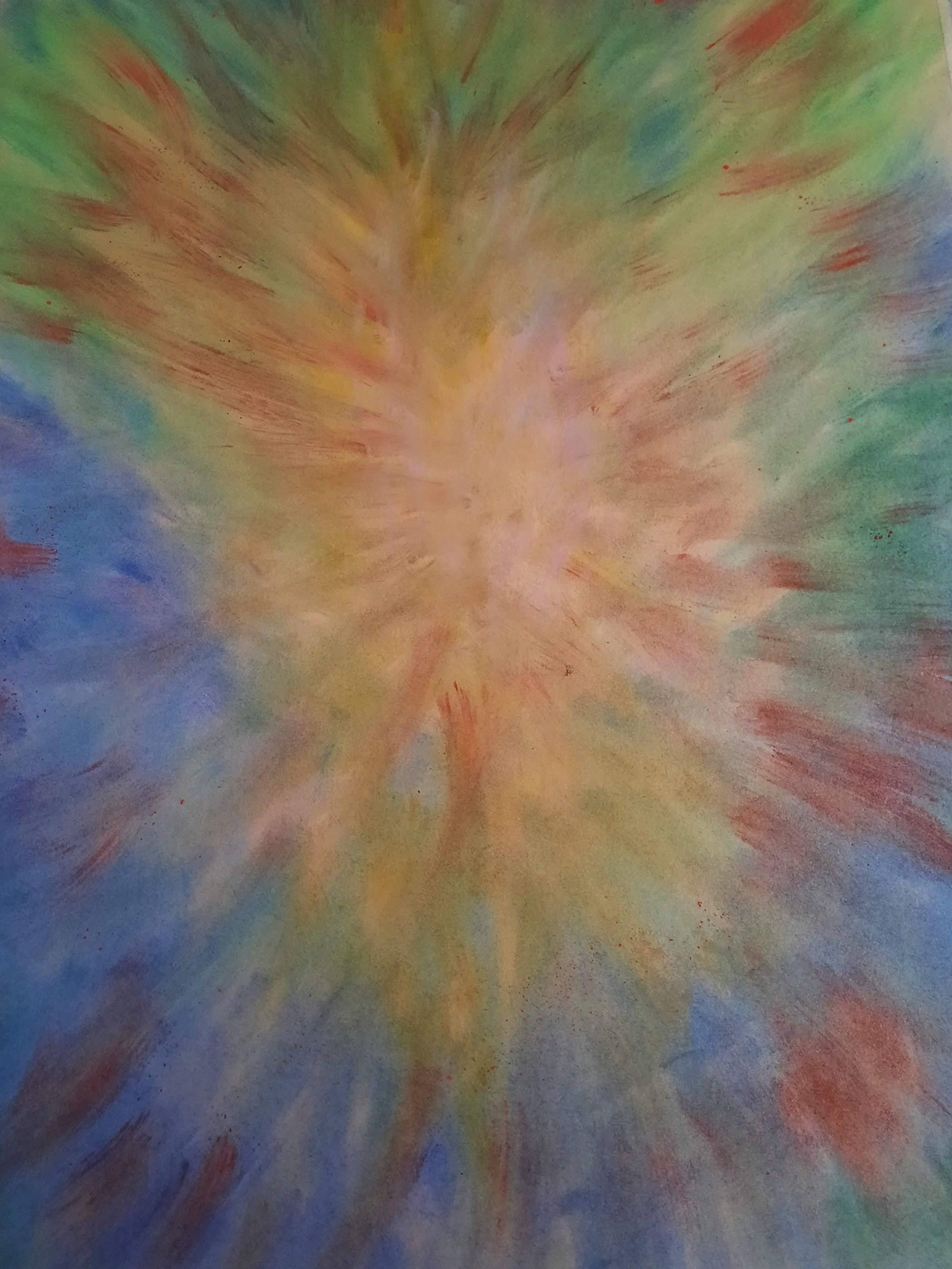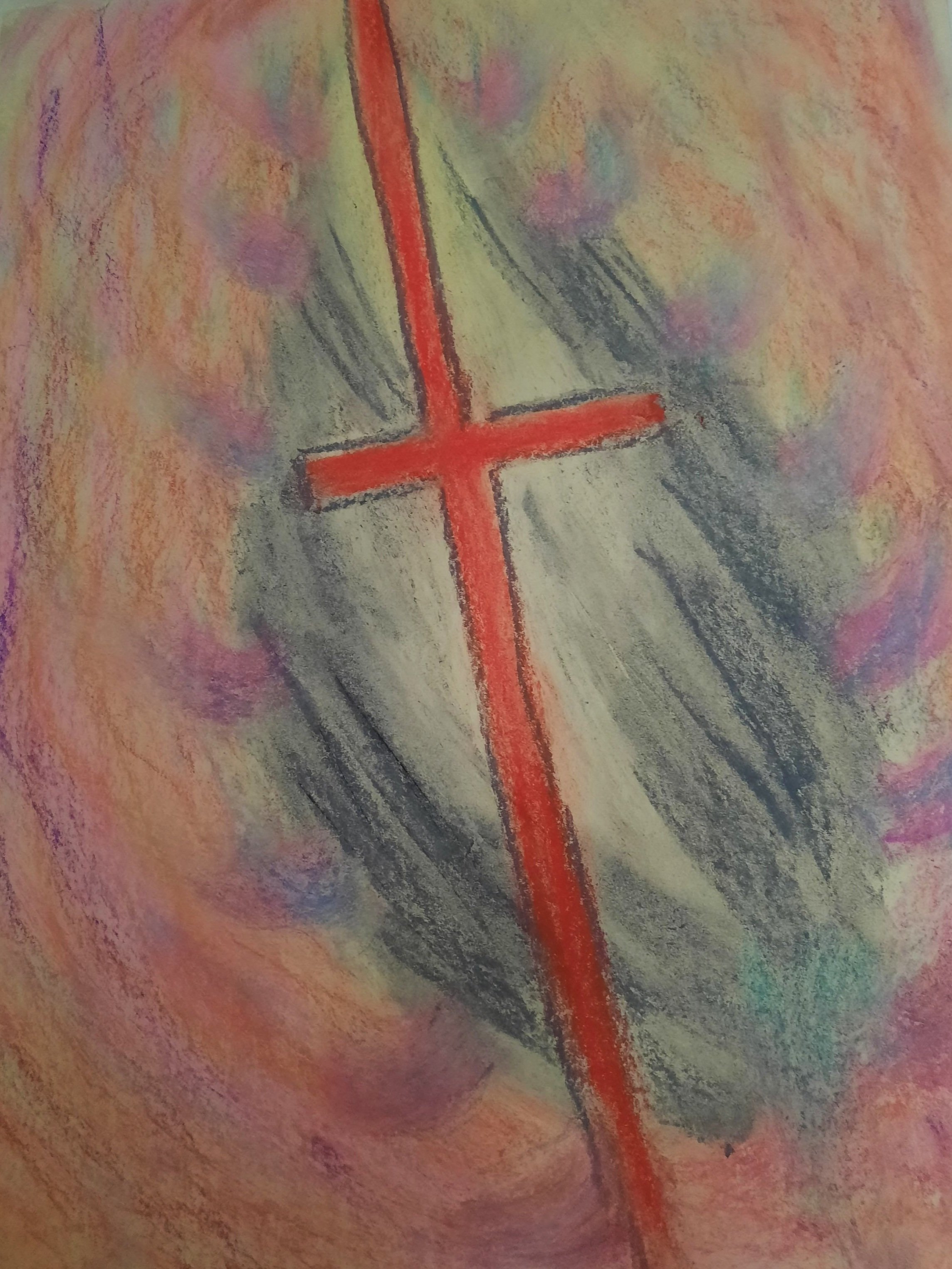The Sickness of Sin and its Medicine - a peek into the classroom
by Silke Chatfield
In the following Article, Silke Chatfield, a continuing Seminary student, reflects on the week-long courses taught in the Seminary by visiting teachers, Rev. Ben Black and Rev. Luis Gonzales. The paintings that you can see throughout the article were done by Seminary students during the latter class.
After two weeks at the Seminary, we had the privilege to receive our first guest teachers. The first course was held by Rev. Ben Black from Cologne (Germany) and we dived into the theme of the Origin of Sin. It was not an easy topic. But it was fundamental for the understanding of the fallen nature of the human being – why we are the way we are.
Going back in time, we were taken through the cosmic evolution of spirit beings and mankind: starting from Old Saturn to present Earth, concentrating on the fall and rebellion of the Luciferic and Ahrimanic Beings and the influence it had on mankind. The fall was both: a gift and a curse. It gave human beings freedom and knowledge. But with it death, pain, suffering, and a separation from God had become a part of earthly evolution. Humans are “innocently guilty,” infected with the “sickness of Sin.”
Then a question arose. If it is a sickness, what’s the medicine?
In our week with Rev. Louis Gonzales (from Lima, Peru) we started to explore some practical answers to this question. Focusing on the theme of “Evil,” we started by looking at the story of Jesus casting out a demon (Luke 8:26-37).
In this story we hear of a man who has been possessed by a demon for many years: driven out into the desert, naked and not in his right mind. Jesus approaches the man with one question: "What is your name?" What a simple question! And yet it is the most difficult question to answer, especially when dealing with our own “demons.” Naming is the first step of acknowledging, of seeing a wound within us. To see and to name is the beginning of the path to redeem the wound. We can attend to it, giving it some space to be. We can even develop a relationship with it.
How is our relationship with evil, the wounds and the sickness of Sin?
Recognizing that we always have a choice between good and evil, why is there so much pain and suffering in our lives? What can we do about it?
Rev. Luis Gonzalez led us very carefully through these questions with warmth and gentle humor.
Evil and suffering in the world are showing us something about our own evil and suffering, and there are two choices: either we perpetuate it or we try to heal that wound. The brokenness of the world can give meaning to our lives. It can become the invitation to acknowledge it, to name it, to sit with it.
It gives an opportunity to come closer to the Christ, to trust and engage in heartfelt, real prayer. Prayer becomes a way to connect to Christ, to go beyond our own emotions and thoughts.
When, in this fashion, we have laid a gentle foundation where these wounds can be held, the Christ can enter into our hearts and souls and help to transform them.
We were then led in an artistic exploration of this topic. We looked at a painting by Pinturiccio, depicting the immaculate conception.
The Immaculate Conception, by Pinturicchio, Bernardino
The place of her womb, where the Christ can enter, is depicted with warm colors. The virgin herself is in a prayerful mood, surrounded by a golden glow.
We then were invited to take pastels and start working on a big piece of paper, very gently, “preparing” a gentle surrounding for our own wound. Building up a “womb” where our pain and suffering can be held and observed. We then added a “wound” each in our own way, for example, a dark blotch in the middle of our painting. Filling this space with the Christ, letting it be suffused by Light, was the last step. We could see how the wound, now transformed, can shine out again.
Our author:
Sike Chatfield was born in East Berlin. She moved to the UK when she was 20 to work in the Camphill Community for four years. She is married and has seven children. She became a member of the Christian Community in 2018 and is now in her second year of the Seminary.







